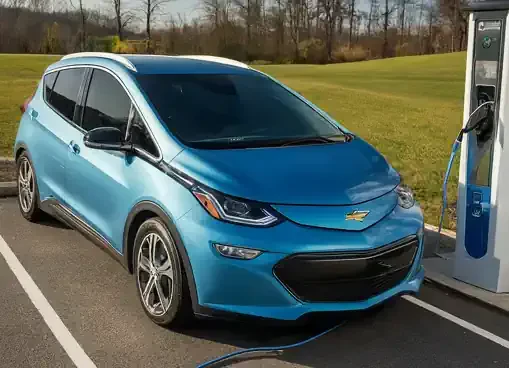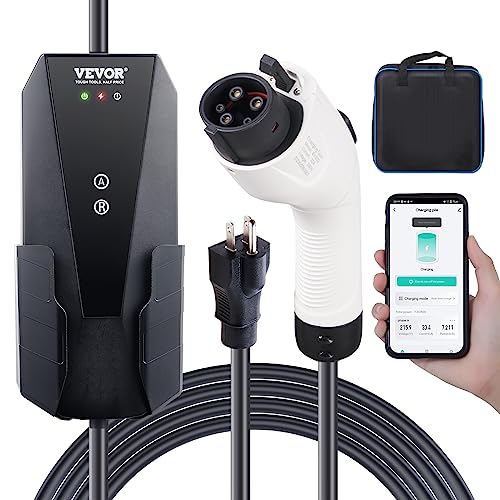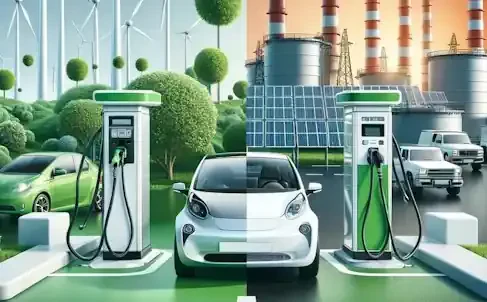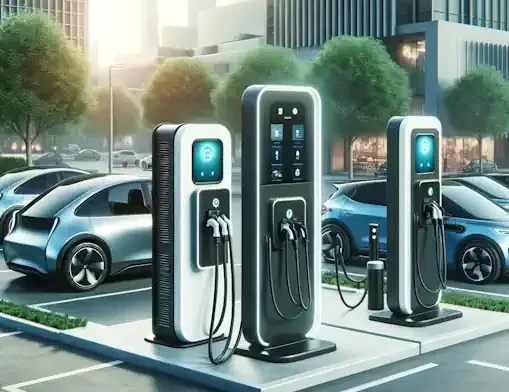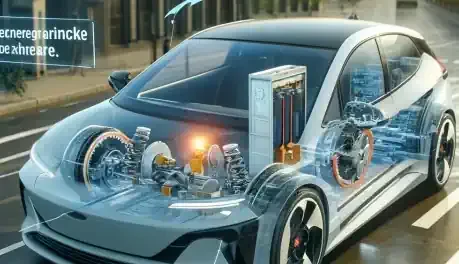Introduction
In recent years, electric cars have surged in popularity as the world seeks cleaner and more sustainable transportation alternatives. With advancements in technology and growing environmental awareness, consumers are increasingly turning to electric vehicles (EVs) as a viable option for reducing their carbon footprint and dependence on fossil fuels.
However, the widespread adoption of electric cars hinges not only on the availability of electric vehicles themselves but also on the supporting infrastructure, particularly electric car chargers. These chargers serve as the lifeblood of the electric vehicle ecosystem, providing the necessary energy to power these vehicles and ensuring their practicality and convenience for everyday use.
Brief overview of the rising popularity of electric cars
The past decade has witnessed a remarkable uptick in the adoption of electric cars, fueled by a combination of factors including advancements in battery technology, increasing concerns about climate change, and government incentives aimed at promoting clean energy transportation. Major automakers have invested heavily in developing electric vehicle models, offering consumers a diverse range of options to suit their preferences and needs.
As a result, electric cars have transitioned from being niche vehicles to mainstream contenders in the automotive market. From compact city cars to luxury sedans and SUVs, electric vehicles now cater to a broad spectrum of drivers, offering both environmental benefits and compelling performance features.
Importance of electric car chargers in enabling widespread adoption
While the proliferation of electric cars represents a significant step towards a greener future, their widespread adoption is contingent upon the availability and accessibility of charging infrastructure. Electric car chargers play a crucial role in addressing the range anxiety often associated with EVs, providing drivers with the confidence and convenience to travel longer distances without fear of running out of power.
Moreover, electric car chargers facilitate the integration of electric vehicles into our daily lives, enabling drivers to recharge their vehicles at home, work, or public charging stations. This accessibility is essential for normalizing electric car usage and overcoming barriers to entry for potential buyers, ultimately driving greater adoption of sustainable transportation solutions.
Thesis statement: Exploring the evolution and significance of electric car chargers
This article aims to delve into the evolution and significance of electric car chargers, tracing their development from basic charging infrastructure to cutting-edge technologies such as fast charging and wireless charging. By examining the role of electric car chargers in the broader context of the electric vehicle revolution, we can gain insights into the challenges, opportunities, and future prospects of sustainable transportation.
The Early Days: Basic Charging Infrastructure
Introduction of early electric car chargers
In the early days of electric vehicles, charging infrastructure was rudimentary and primarily designed for limited use cases. As electric cars began to emerge as a viable alternative to traditional combustion engine vehicles, pioneers in the industry recognized the need for infrastructure to support these new modes of transportation. Consequently, the first electric car chargers were introduced, laying the groundwork for what would later become an essential component of the electric vehicle ecosystem.
Limitations and challenges faced by early adopters
Early electric car chargers faced numerous limitations and challenges that hindered their widespread adoption. One of the primary challenges was the lack of standardization, with different manufacturers implementing proprietary charging systems that were incompatible with each other. This fragmentation made it difficult for electric car owners to find compatible charging stations, leading to inconvenience and frustration.
Additionally, the charging speed of early electric car chargers was relatively slow compared to today's standards. Charging times could vary significantly depending on the charger's power output and the vehicle's battery capacity, making long-distance travel impractical for many electric car owners. Range anxiety, or the fear of running out of battery power before reaching a charging station, was a prevalent concern among early adopters and contributed to skepticism about the viability of electric vehicles as a primary mode of transportation.
Emergence of standard charging protocols
To address the challenges posed by incompatible charging systems, industry stakeholders began working towards standardizing electric vehicle charging protocols. This effort led to the emergence of standard charging protocols such as CHAdeMO, CCS (Combined Charging System), and Tesla's proprietary Supercharger network. Standardization not only ensured interoperability between different electric vehicles and charging stations but also laid the foundation for the development of more advanced charging technologies in the future.
The establishment of standard charging protocols marked a significant milestone in the evolution of electric car chargers, paving the way for greater convenience, accessibility, and acceptance of electric vehicles among consumers. As the infrastructure continued to evolve, the stage was set for the introduction of faster charging solutions that would further accelerate the adoption of electric cars and revolutionize the way we think about sustainable transportation.
Leveling Up: Fast Charging Stations
Introduction of fast charging stations
As electric vehicles gained traction in the automotive market, the demand for faster and more efficient charging solutions became increasingly evident. Fast charging stations emerged as a response to this need, offering significantly quicker charging times compared to conventional charging methods. These stations utilize high-power charging technology to deliver rapid replenishment of electric vehicle batteries, making long-distance travel more feasible and convenient for EV owners.
Advantages and benefits of fast charging technology
Fast charging technology brings several advantages and benefits to electric vehicle owners. Firstly, it dramatically reduces charging times, allowing drivers to replenish their vehicle's battery to a usable level in a fraction of the time required by standard chargers. This improvement in charging speed enhances the practicality and versatility of electric cars, enabling drivers to undertake longer journeys with fewer interruptions.
Moreover, fast charging stations are often strategically located along major highways and travel routes, facilitating seamless long-distance travel for electric vehicle owners. The convenience of being able to quickly recharge the battery during a road trip alleviates range anxiety and encourages more people to consider electric vehicles as a viable option for their transportation needs.
Additionally, fast charging technology supports the scalability of electric vehicle adoption by minimizing downtime for charging. This is particularly beneficial for commercial fleets and rideshare services, where vehicles are in constant use and downtime can translate to lost revenue. By reducing charging times, fast charging stations optimize the operational efficiency of electric vehicles and contribute to the overall economic viability of electrified transportation solutions.
Impact on driving range and convenience for electric vehicle (EV) owners
The introduction of fast charging stations has had a profound impact on the driving range and convenience for electric vehicle owners. With the ability to replenish a significant portion of the battery's capacity in a matter of minutes, drivers can confidently embark on long journeys without the fear of being stranded due to insufficient charge. Fast charging stations effectively extend the practical range of electric vehicles, making them a viable option for a wide range of driving scenarios.
Furthermore, the convenience of fast charging stations enhances the overall ownership experience for electric vehicle owners. Whether on a daily commute or a cross-country road trip, the availability of fast charging infrastructure ensures that drivers can easily access the energy needed to keep their vehicles running smoothly. This convenience factor is a crucial enabler of widespread electric vehicle adoption and plays a significant role in shaping consumer perceptions and preferences.
Examples of prominent fast charging networks worldwide
Several prominent fast charging networks have emerged around the world, each offering extensive coverage and reliable service to electric vehicle owners. Examples include:
Tesla Supercharger Network: Tesla's proprietary Supercharger network is renowned for its extensive coverage and rapid charging speeds. With thousands of stations strategically located across North America, Europe, and Asia, Tesla owners can recharge their vehicles quickly and conveniently, enabling seamless long-distance travel.
Electrify America: Developed as part of Volkswagen's settlement with U.S. regulators over the Dieselgate scandal, Electrify America operates one of the largest open-network fast charging networks in the United States. The network features high-power charging stations capable of delivering up to 350 kW, making it compatible with a wide range of electric vehicles.
Ionity: Ionity is a joint venture between several major automakers, including BMW, Daimler, Ford, and Volkswagen Group, aimed at establishing a comprehensive fast charging infrastructure across Europe. The network focuses on deploying high-power charging stations along major highways and travel corridors, offering EV owners fast and reliable charging options for long-distance travel.
These examples demonstrate the global proliferation of fast charging networks and their crucial role in supporting the widespread adoption of electric vehicles. As the demand for electric cars continues to grow, the expansion and enhancement of fast charging infrastructure will remain a top priority for industry stakeholders striving to accelerate the transition to sustainable transportation.
Wireless Charging: The Future of Convenience
Introduction to wireless charging technology
Wireless charging technology represents a significant advancement in the field of electric vehicle (EV) charging, offering a convenient and efficient alternative to traditional plug-in charging methods. Unlike conventional chargers that require physical connection between the vehicle and the charging station, wireless charging systems use electromagnetic fields to transfer energy wirelessly from a charging pad embedded in the ground to a receiver coil installed on the underside of the vehicle.
Advantages and potential drawbacks of wireless charging for electric cars
Wireless charging for electric cars brings several advantages, foremost among them being convenience. With wireless charging, EV owners can simply park their vehicles over a designated charging pad, eliminating the need for manual connection and disconnection of charging cables. This seamless charging experience is particularly appealing for urban environments and high-traffic areas where time and convenience are paramount.
Additionally, wireless charging technology helps mitigate issues related to wear and tear on charging connectors and cables, which can degrade over time with frequent use. By eliminating physical contact between the charging infrastructure and the vehicle, wireless charging systems reduce the risk of mechanical failure and maintenance costs associated with traditional plug-in chargers.
However, wireless charging also has potential drawbacks that need to be addressed. One concern is the efficiency of energy transfer compared to plug-in charging methods. Wireless charging systems may experience slightly lower efficiency due to energy losses associated with electromagnetic induction, although advancements in technology are continually improving efficiency levels.
Another consideration is the cost of implementing wireless charging infrastructure, which can be higher than traditional plug-in chargers due to the need for specialized components such as charging pads and receiver coils. Additionally, the deployment of wireless charging systems may require significant modifications to existing infrastructure, posing logistical challenges and potential disruptions during installation.
Current developments and challenges in implementing wireless charging infrastructure
Despite these challenges, significant progress has been made in the development and deployment of wireless charging infrastructure for electric vehicles. Several automakers and technology companies have invested in research and development efforts to commercialize wireless charging systems, with prototypes already being tested in real-world environments.
However, widespread adoption of wireless charging still faces several challenges. One challenge is standardization, as multiple competing standards for wireless charging exist, which can create compatibility issues and fragmentation in the market. Efforts to establish common standards and interoperability protocols are ongoing but require collaboration among industry stakeholders to achieve widespread adoption.
Additionally, the scalability of wireless charging infrastructure remains a concern, particularly in densely populated urban areas where demand for EV charging is high. Deploying wireless charging systems at scale requires careful planning and coordination to ensure adequate coverage and accessibility for electric vehicle owners.
Potential impact on EV adoption and urban mobility
Despite these challenges, the potential impact of wireless charging on electric vehicle adoption and urban mobility is significant. Wireless charging technology has the potential to revolutionize the way we think about EV charging, offering a seamless and user-friendly experience that encourages greater adoption of electric vehicles.
In urban environments, wireless charging infrastructure can help address challenges related to limited parking space and congestion by enabling automated charging solutions. Electric vehicles equipped with wireless charging capabilities can autonomously park over charging pads embedded in the ground, minimizing the need for manual intervention and maximizing the utilization of available space.
Furthermore, wireless charging technology has the potential to transform public transportation and fleet operations by enabling continuous charging of electric vehicles during scheduled stops or layovers. This capability extends the range and operational flexibility of electric buses, taxis, and delivery vehicles, making them more competitive with their fossil fuel counterparts.
Overall, wireless charging represents a promising avenue for advancing the electrification of transportation and promoting sustainable urban mobility solutions. While challenges remain in implementing widespread wireless charging infrastructure, ongoing technological advancements and collaborative efforts within the industry are driving progress towards realizing the full potential of this innovative charging technology.
Overcoming Range Anxiety: Ultra-Fast Charging
Introduction to ultra-fast charging technology
Ultra-fast charging technology represents the next frontier in electric vehicle (EV) charging, offering unprecedented charging speeds and capabilities that address one of the primary concerns among EV owners: range anxiety. Unlike conventional charging methods, which typically take several hours to fully recharge an electric vehicle's battery, ultra-fast charging stations can replenish a significant portion of the battery's capacity in a matter of minutes, making long-distance travel more practical and accessible for EV drivers.
Key features and advancements in ultra-fast charging stations
Ultra-fast charging stations are characterized by their high-power output and advanced charging infrastructure designed to deliver rapid charging speeds. These stations typically utilize direct current (DC) charging technology and are equipped with powerful charging equipment capable of delivering charging rates of up to 350 kilowatts (kW) or higher.
Key advancements in ultra-fast charging stations include
High-power charging infrastructure: Ultra-fast charging stations feature robust infrastructure capable of handling high-power charging rates without compromising reliability or safety. This includes heavy-duty charging cables, cooling systems, and power distribution equipment designed to efficiently deliver electricity to the vehicle's battery.
Liquid-cooled charging cables: To accommodate the high currents required for ultra-fast charging, many charging stations are equipped with liquid-cooled charging cables that help dissipate heat generated during the charging process. This ensures optimal charging performance and helps prevent overheating of the charging equipment.
Dynamic charging capabilities: Some ultra-fast charging stations feature dynamic charging capabilities that adjust the charging rate based on factors such as battery temperature, state of charge, and power grid capacity. This adaptive charging technology optimizes the charging process to maximize efficiency and battery longevity while minimizing charging times.
Implications for reducing range anxiety and enhancing long-distance travel with electric cars
The introduction of ultra-fast charging stations has significant implications for reducing range anxiety and enhancing the practicality of long-distance travel with electric cars. By dramatically reducing charging times, ultra-fast charging technology alleviates concerns about running out of battery power during extended journeys, thereby increasing the confidence and peace of mind of EV drivers.
Furthermore, ultra-fast charging stations enable more efficient travel planning by minimizing the time spent at charging stations. EV drivers can quickly recharge their vehicles during rest stops or meal breaks, allowing them to cover longer distances without the need for extended downtime. This enhanced flexibility and convenience make electric cars a more viable option for road trips and cross-country travel, further accelerating the adoption of sustainable transportation solutions.
Case studies of ultra-fast charging networks and their significance
Several prominent ultra-fast charging networks have emerged worldwide, each playing a significant role in shaping the future of electric vehicle charging infrastructure. Examples include:
Electrify America: Developed as part of Volkswagen's settlement with U.S. regulators, Electrify America operates one of the largest ultra-fast charging networks in the United States. With charging stations capable of delivering up to 350 kW, Electrify America's network provides EV drivers with rapid charging options along major highways and travel routes.
Ionity: Ionity is a joint venture between major automakers aimed at establishing a comprehensive ultra-fast charging network across Europe. By strategically deploying high-power charging stations along key transportation corridors, Ionity facilitates long-distance travel and promotes the widespread adoption of electric vehicles throughout the region.
Tesla Supercharger Network: Tesla's proprietary Supercharger network remains one of the most extensive and widely recognized ultra-fast charging networks globally. With thousands of stations strategically located across North America, Europe, and Asia, Tesla owners benefit from fast and convenient charging options that enable seamless long-distance travel.
These case studies highlight the significance of ultra-fast charging networks in overcoming range anxiety and promoting the widespread adoption of electric vehicles. By providing EV drivers with access to rapid charging solutions, these networks contribute to the continued growth and sustainability of the electric vehicle market, driving towards a cleaner and more efficient future of transportation.
The Role of Infrastructure Investment
Importance of infrastructure investment in promoting electric car adoption
Infrastructure investment plays a crucial role in promoting the adoption of electric cars by addressing key barriers to entry and enhancing the overall user experience. Electric vehicle (EV) charging infrastructure, including public charging stations, workplace chargers, and residential charging solutions, is essential for supporting the growing number of EVs on the road and encouraging consumers to transition to electric transportation.
Investment in charging infrastructure is critical for alleviating range anxiety, a common concern among potential EV buyers. By expanding the availability of charging stations and improving their accessibility, infrastructure investment helps reassure consumers that they will have convenient options for recharging their vehicles, both at home and on the go.
Furthermore, infrastructure investment is essential for fostering innovation and technological advancement in the electric vehicle market. By incentivizing the development of faster charging technologies, interoperable charging standards, and smart charging solutions, investment in charging infrastructure accelerates the transition to cleaner and more sustainable transportation systems.
Government initiatives and private sector investments in charging infrastructure
Governments around the world have recognized the importance of charging infrastructure investment in promoting electric vehicle adoption and have implemented various initiatives to support its development. These initiatives may include financial incentives, regulatory mandates, and public-private partnerships aimed at expanding the availability and accessibility of charging infrastructure.
Government funding programs, such as grants, tax incentives, and rebates, provide financial support to businesses, utilities, and local authorities for deploying charging infrastructure. These incentives help offset the upfront costs associated with installing charging stations and encourage investment in underserved areas where market demand alone may not be sufficient to justify infrastructure deployment.
Private sector investments also play a significant role in driving the expansion of charging networks. Companies in the energy, automotive, and technology sectors are investing in the development of charging infrastructure to capitalize on the growing demand for electric vehicles and position themselves as leaders in the emerging market for electric transportation solutions.
Public-private partnerships are increasingly common in the deployment of charging infrastructure, leveraging the strengths and resources of both government agencies and private companies to accelerate infrastructure development. These partnerships enable collaboration on planning, financing, and operating charging networks, leading to more efficient and cost-effective deployment of infrastructure.
Challenges and opportunities in expanding charging networks globally
While significant progress has been made in expanding charging networks globally, several challenges and opportunities remain in achieving widespread coverage and accessibility.
One challenge is the need for coordination and standardization among stakeholders to ensure interoperability and compatibility of charging infrastructure. Fragmentation in charging standards and protocols can hinder the user experience and create barriers to EV adoption. Efforts to establish common standards and interoperable charging solutions are essential for maximizing the efficiency and effectiveness of charging networks.
Another challenge is the equitable distribution of charging infrastructure, particularly in underserved and rural areas where access to charging stations may be limited. Infrastructure investment must prioritize equity and inclusivity to ensure that all communities have access to convenient and reliable charging options, regardless of socioeconomic status or geographic location.
Opportunities for expanding charging networks globally include leveraging emerging technologies, such as smart grid integration, renewable energy integration, and vehicle-to-grid (V2G) capabilities, to enhance the efficiency and sustainability of charging infrastructure. By integrating charging infrastructure with renewable energy sources and grid management systems, stakeholders can optimize energy use, reduce emissions, and improve the resilience of the electric grid.
Overall, infrastructure investment is essential for driving the widespread adoption of electric vehicles and advancing the transition to sustainable transportation systems. By addressing challenges and seizing opportunities in expanding charging networks globally, stakeholders can accelerate the transition to a cleaner, greener, and more resilient future of mobility.
Environmental and Economic Implications
Environmental benefits of widespread adoption of electric cars and charging infrastructure
The widespread adoption of electric cars and charging infrastructure offers significant environmental benefits, contributing to the reduction of greenhouse gas emissions, air pollution, and dependence on fossil fuels. Electric vehicles produce zero tailpipe emissions, reducing air pollutants such as nitrogen oxides, particulate matter, and volatile organic compounds that contribute to respiratory illnesses and environmental degradation.
Furthermore, the environmental impact of electric cars is dependent on the source of electricity used for charging. When powered by renewable energy sources such as wind, solar, and hydroelectric power, electric vehicles can significantly reduce carbon emissions compared to conventional internal combustion engine vehicles. By transitioning to clean energy sources for electricity generation, electric cars play a crucial role in mitigating climate change and promoting environmental sustainability.
Charging infrastructure powered by renewable energy further enhances the environmental benefits of electric transportation, reducing the carbon footprint associated with charging operations. Smart charging solutions and energy management systems enable optimization of charging patterns to minimize energy consumption and maximize the use of renewable energy resources, further reducing environmental impact.
Economic opportunities in the electric vehicle charging industry
The electric vehicle charging industry presents a range of economic opportunities for businesses, entrepreneurs, and investors. As the demand for electric cars continues to grow, so too does the need for charging infrastructure and related services, creating opportunities for job creation, innovation, and economic growth.
Investment in electric vehicle charging infrastructure stimulates economic activity across various sectors, including construction, manufacturing, technology, and services. Charging station deployment requires skilled labor for installation, maintenance, and operation, providing employment opportunities in local communities and supporting economic development.
Furthermore, the electric vehicle charging industry fosters innovation and entrepreneurship, with opportunities for businesses to develop and commercialize new technologies, products, and services. From advanced charging solutions and energy management systems to smart grid integration and software platforms, the electric vehicle charging market offers a fertile ground for innovation and investment.
Moreover, the transition to electric transportation presents opportunities for businesses to capitalize on emerging market trends and consumer preferences. Companies that offer electric vehicle charging services, energy storage solutions, and related infrastructure technologies stand to benefit from the growing demand for sustainable mobility solutions and the transition towards a low-carbon economy.
Potential challenges and considerations for sustainable growth
Despite the promising outlook for the electric vehicle charging industry, several challenges and considerations must be addressed to ensure sustainable growth and long-term viability.
One challenge is the need for comprehensive planning and coordination to ensure the efficient deployment of charging infrastructure and avoid overinvestment or duplication of resources. Strategic planning, collaboration among stakeholders, and data-driven decision-making are essential for optimizing infrastructure deployment and maximizing the benefits of investment.
Additionally, regulatory and policy frameworks play a crucial role in shaping the development of the electric vehicle charging industry. Clear and consistent regulations, incentives, and standards are needed to facilitate investment, ensure fair competition, and promote interoperability and accessibility of charging infrastructure.
Furthermore, considerations related to equity, accessibility, and affordability must be addressed to ensure that electric vehicle charging infrastructure benefits all communities and demographic groups. Efforts to expand charging networks should prioritize underserved areas and low-income communities to reduce disparities in access to clean transportation options.
Moreover, the integration of electric vehicle charging infrastructure with the electric grid presents technical, logistical, and regulatory challenges that must be addressed to ensure grid stability, reliability, and resilience. Coordination between utilities, grid operators, and charging infrastructure providers is essential for managing the impact of charging on the grid and optimizing energy use.
Overall, addressing these challenges and considerations is essential for fostering sustainable growth and maximizing the environmental, economic, and social benefits of electric vehicle adoption and charging infrastructure deployment. By leveraging innovation, collaboration, and strategic planning, stakeholders can drive the transition to a cleaner, more sustainable future of transportation.
Conclusion
In conclusion, the evolution of electric car chargers has been instrumental in shaping the landscape of sustainable transportation, paving the way for the widespread adoption of electric vehicles (EVs) and the transition towards cleaner, greener mobility solutions. From the early days of basic charging infrastructure to the advent of ultra-fast charging technology and wireless charging systems, electric car chargers have undergone remarkable advancements, enhancing the accessibility, convenience, and efficiency of EV charging.
Recap of the evolution of electric car chargers
The journey of electric car chargers began with the introduction of basic charging infrastructure, overcoming early challenges such as lack of standardization and limited charging speeds. As technology advanced, fast charging stations emerged, offering rapid charging capabilities that revolutionized long-distance travel with electric vehicles. Subsequent innovations, such as wireless charging and ultra-fast charging, further pushed the boundaries of EV charging, providing drivers with unprecedented convenience and flexibility.
Importance of charging infrastructure in accelerating the transition to sustainable transportation
Charging infrastructure plays a pivotal role in accelerating the transition to sustainable transportation by addressing key barriers to EV adoption, such as range anxiety and charging accessibility. As the backbone of the electric vehicle ecosystem, charging infrastructure enables EV drivers to recharge their vehicles conveniently and reliably, thereby encouraging greater uptake of electric cars and reducing reliance on fossil fuels.
Future prospects and areas for further innovation in electric vehicle charging technology
Looking ahead, the future of electric vehicle charging technology holds immense promise for further innovation and advancement. Areas for future innovation include the development of ultra-fast charging solutions with even higher charging speeds, continued improvements in wireless charging technology, and integration of smart grid capabilities to optimize energy use and grid stability.
Moreover, advancements in battery technology, renewable energy integration, and vehicle-to-grid (V2G) capabilities are expected to further enhance the efficiency and sustainability of electric vehicle charging infrastructure. These innovations will not only drive the continued growth of the electric vehicle market but also contribute to the transformation of the transportation sector towards a more sustainable and resilient future.
In conclusion, electric car chargers have come a long way since their inception, evolving from basic charging stations to sophisticated charging solutions that cater to the needs of modern electric vehicles. As we continue to push the boundaries of innovation and sustainability, electric vehicle charging technology will play an increasingly critical role in shaping the future of transportation, driving us towards a cleaner, greener, and more sustainable world.
